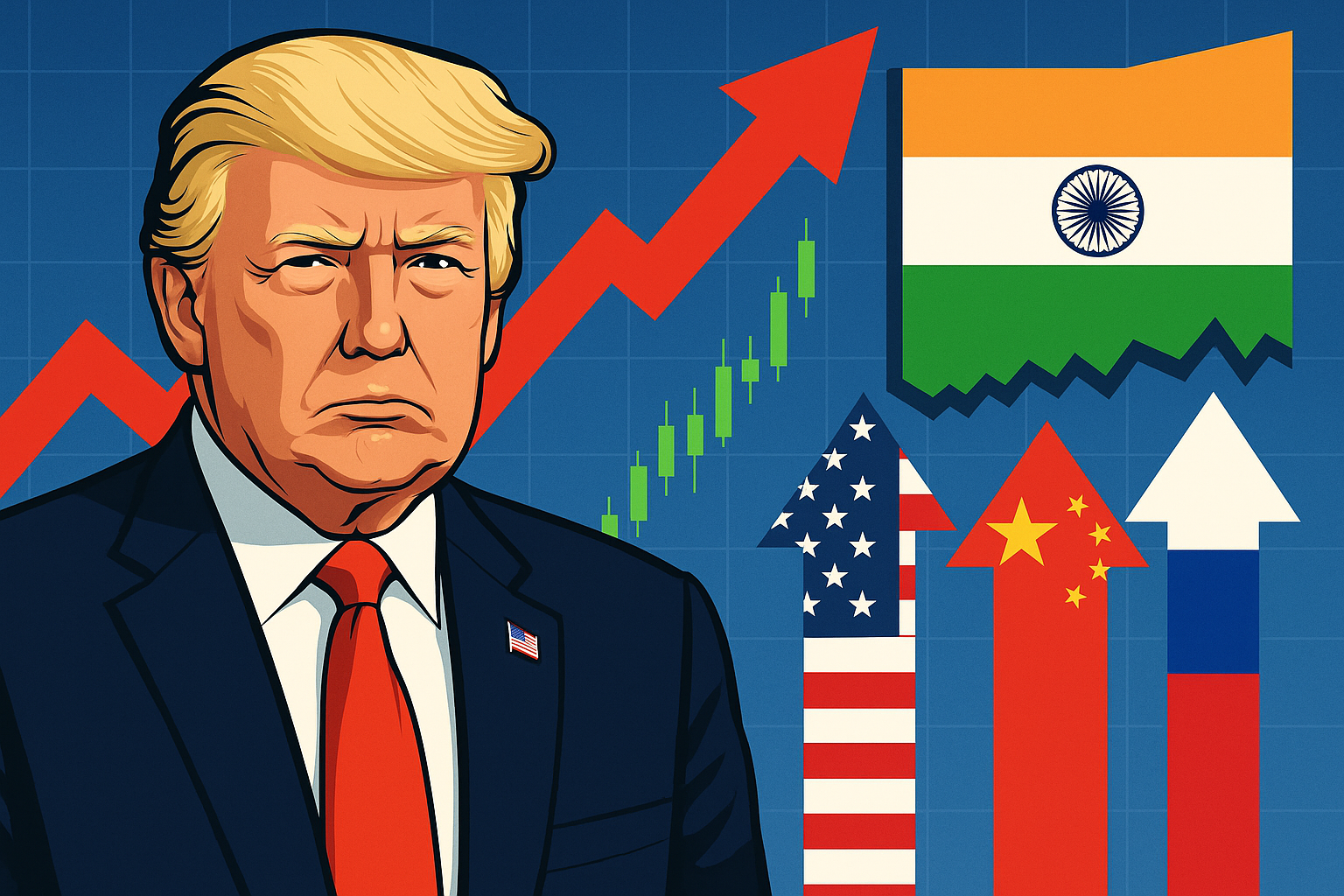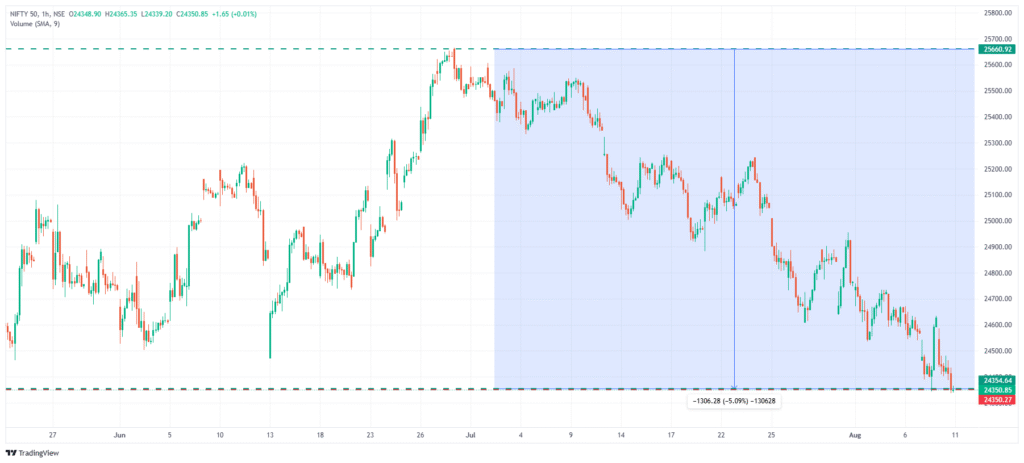Trump’s 50% Tariff Decision: How It Could Reshape India’s Economy, Markets, and Global Trade

Introduction: The Global Shockwave
The announcement by former U.S. President Donald Trump to impose a 50% tariff on all imports marks one of the most aggressive trade protectionist measures in recent history. This move aims to protect domestic industries in the U.S., but it is already triggering ripples in international markets. While the immediate spotlight is on U.S.-China trade relations, the impact on emerging economies like India could be significant, particularly in exports, imports, currency stability, and investor sentiment with the Trump tariff on imports for India.
1. How the Tariff Policy Could Affect India
Export Disruptions
- India’s export basket—ranging from textiles to IT services—could face reduced competitiveness in the U.S. market if retaliatory measures or stricter regulations are applied.
- Sectors like pharmaceuticals, auto parts, and steel may see direct pricing pressure due to added costs in the supply chain.
Currency Volatility
- A trade war environment typically leads to investor flight to safe havens like the U.S. dollar, causing emerging market currencies like the Indian Rupee to depreciate.
- A weaker Rupee could increase import costs for India, further impacting inflation.
2. China and Russia’s Strategic Position
China’s Countermoves
- China is expected to respond with retaliatory tariffs, potentially redirecting its trade and investments toward emerging markets, including India.
- However, India could face indirect pressure if cheap Chinese goods flood its domestic markets due to reduced U.S. demand.
Russia’s Role
- Russia may strengthen its energy and defense trade partnerships with India to counterbalance U.S. influence.
- However, closer India-Russia ties could trigger secondary sanctions risks from Western economies.
3. Indian Stock Market Impact
Short-Term Volatility
- Expect sharp movements in sectors tied to global trade: IT, metals, and manufacturing.
- Foreign institutional investors (FIIs) may pull out capital in the short run due to global uncertainty.
Long-Term Opportunities
- If India plays its diplomatic cards right, it could attract investment from companies diversifying away from China to mitigate tariff risks.
- Domestic manufacturing could see a boost under the “Make in India” push if global supply chains pivot toward South Asia.
4. Future Outlook: Navigating the Trade Maze
- Best-Case Scenario: India strengthens its role in the global supply chain, leveraging trade tensions to attract investment and build export resilience.
- Worst-Case Scenario: A prolonged global trade war depresses demand, stifles investment, and triggers prolonged market instability.
- Key Watchpoints:
- U.S.-China negotiations
- India’s bilateral trade talks with the U.S.
- Russia’s positioning in the new trade order
Conclusion
Trump’s 50% tariff decision isn’t just a U.S.-China story—it’s a geopolitical and economic shift that could redefine India’s role in the global market. From trade realignment to stock market volatility, the coming months will test India’s policy agility, diplomatic strategy, and economic resilience – Trump tariff on imports.
If navigated strategically, India could emerge not just as a survivor of the trade war—but as a key player in the restructured global economy. Suggestion is to stay invested for long term and have some emergency investing funds for any future opportunity that might come.
Also, read our other article EPF Interest Rate for FY25 Stays at 8.25%: How Much You’ll Earn & When It Gets Credited
Check out more article on Finance on our Finance Category section.
#TrumpTariff #IndiaStockMarket #TradeWar #GlobalEconomy #ChinaRussiaTrade #USIndiaRelations #EconomicImpact #Geopolitics #IndianExports #MarketAnalysis




